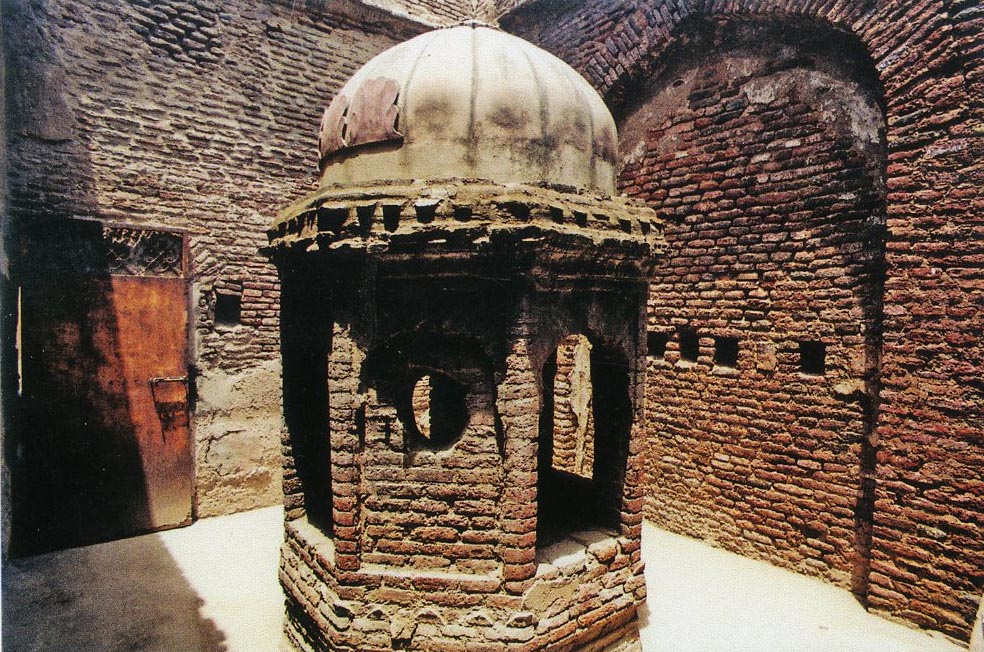
It is very romantic to speak of the twin cities of Lahore and Kasur and link them to perhaps two brothers Loh (actually Lava) and Kasu (actually Kusa), son of the legendary god Ram Chandar of Hindu religion. Certainly Loh is remembered as the son of Ram Chandar, but little is known of a brother Kasu. This Lahore idea was first floated by a Hindu writer Munshi Sujan Rai perhaps in 1691 AD (the amazing fact is that no old manuscript is known, and when it covers 40 years of Aurangzebs reign, all manuscripts have date of death of Aurangzeb too (years later), and the earliest manuscript is dated 1168 AH or 1754 AD and even that has some missing and replaced pages, and even more amazing of the five manuscripts known, not one has his name in it) in Khulasatul Tawareekh, as compared to simple statement of Lahori writer Ahmad Zanjani in Tuhfa Sawaleen in 1043 AD (648 years previous) which ridicules this conjecture. But nowhere was mentioned that his Mandir exist in the Lahore Fort. No mention of same even with Kanhaiya Lal in 1884, and up to the best of my knowledge it was Judge Muhammed Latif in 1892 AD, who narrated the existence of Mandir, and speaks of it being in a deep hollow which is descended by wooden stairs. Or rather ladder if you call it. Not very clear really. Made to mention but no image in his book.
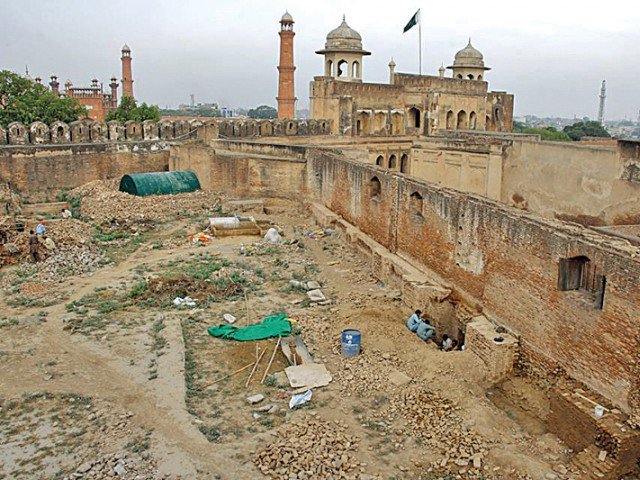

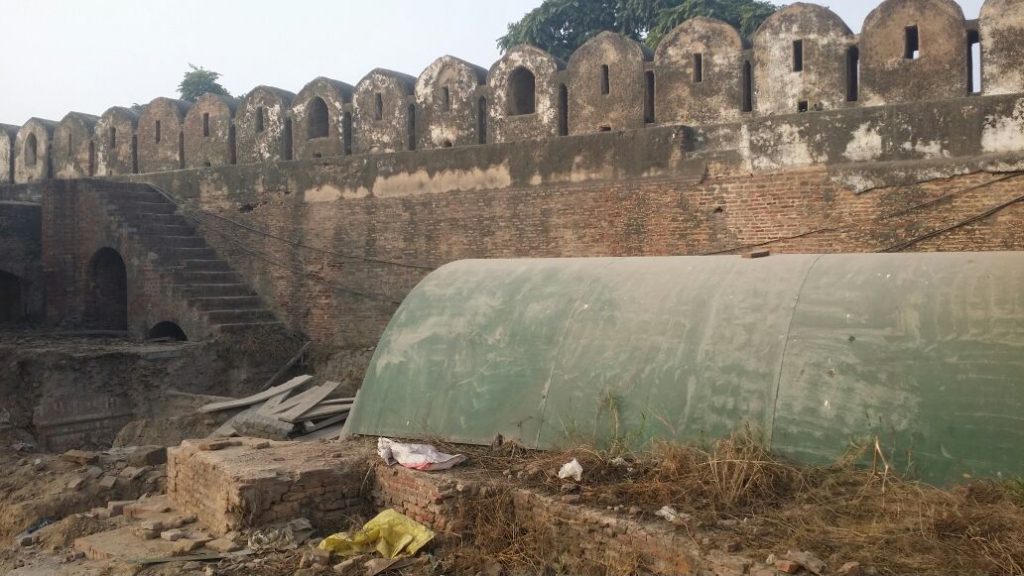
A startling narration is done by Munshi Muhammed Din Fauq in his book Aed i Mughlia Lahore published in 1927. He says that the Hindu lobby represented by Sanatan Dharm Yudal Saba communicated (for some period) with the British authorities in Lahore and as a result of their pressure the Superintendent Archaeology accompanied them to a supposed site of the Mandir. The Sanatan Dharm members were present when they visited the site on 11th December, 1923. Nothing was visible. Digging was proposed. It was found that under two feet of a debris a gumband could be seen and the area was ordered to be cleared and the surface floor reached, which was on level with the ground of Hazuri Bagh. But the startling find on 13th December, was different in all ways. Remains of a GIANT of a person were discovered in it. It was a person much larger than the present generation. Fingers of the hands were discovered which were so large as to be unbelievable. Very sharp teeth were discovered there too. It was the grave of a giant. Sanatan Dharm people were of the view that the bones were of Loh, son of Ram. The Archaeology department could only say that these were Pre-Bhuddist era bones. But what about the architecture of the structure itself.
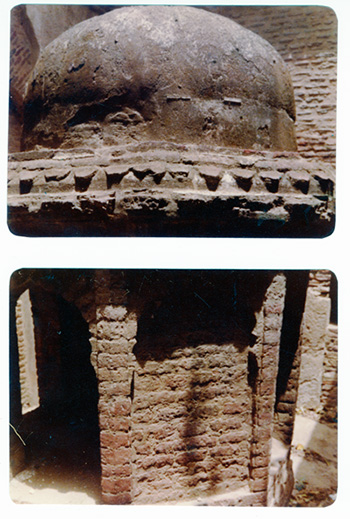
It was certainly not a prehistoric structure and nor one could call it a Neanderthal grave. It was a combination of Sikh and British architecture for the various bricks used were of Sikh and British period. The Dome was naturally a poor fluted melon dome of the late Sikh period.It was so small in structure with a circular window on opposite end that it actually looked merely like a small well. The depth of the inside was not comprehended, and the inside floor was closed too. No one could enter it nor lit anything over it. No lingam there. It had no match with any Mandir in the world. But it was asserted as Mandir of Loh, thousands of years old. The structure was not even 150 years of age. Everybody wanted to jump to their own conclusions. The pressure of international lobby of Sanatan Dharm, founded by Bhadashi Maraj in Trinidad and Tobago in 1881, was very evidently there. The Hindu lobby was asserting itself.
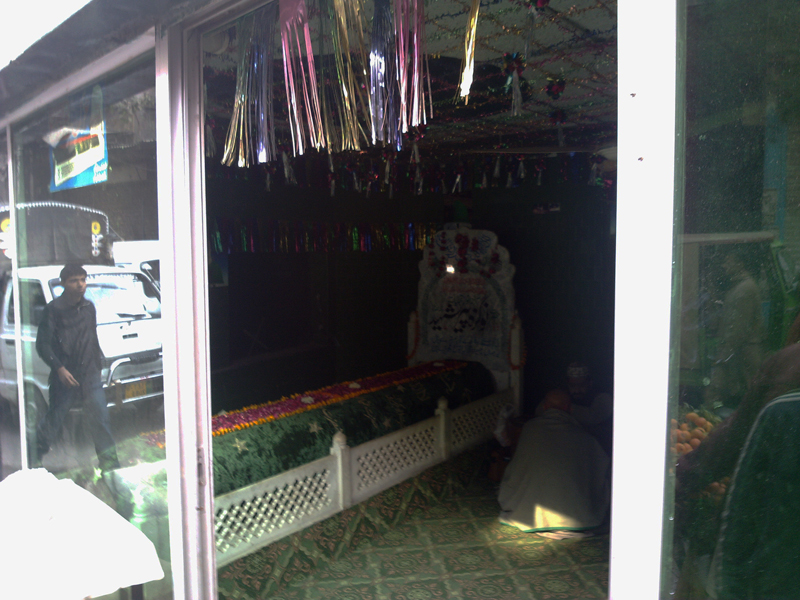
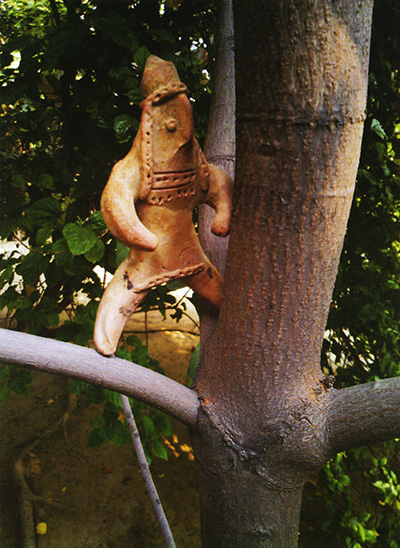
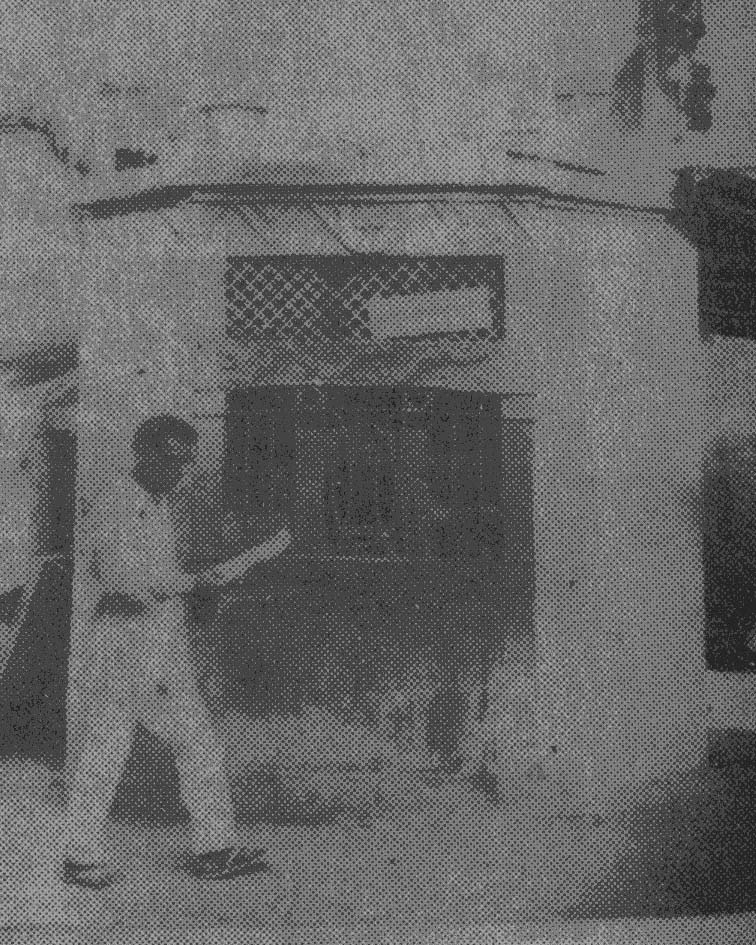
A little nearby on the same line is the famous MAZAR OF NAU GUZZA LAHORE. It is certainly that the British after the war of independence of 1857, restructured the whole place. The whole area witnessed breaking of walls and making of new walls for security of British troops. A gate of Lahore Fort which came in and housed the commiserate godown closed for ever. In fact the whole wall was broken and made again. Excavations point out Mughal structures even below the surface of Loh Mandir. Very recently a wall came out with a continuous mihrab design of red in white background and pointed out past structures as this was a kind of arena. Or perhaps the Bagh of Nau-guzza. Nobody thought of linking this site with the grave of the Nau guzza. There was a bagh here in which this so called mandir (looks more like a water well, gurki water disposal, or a corner minar for a guard) stood on one end and the other other end is the Mazar of Nau guzza (now outside the Fort walls). It can all be related so easily in reality by even any nincompoop. Here we have accomplished persons making guesses and claims outrageous.

Where did the bones go? Perhaps preserved by the Archaeology department. Perhaps taken by Sanatan Dharm people. No one knows. A look at the newspaper of those times may reveal a lot of things. The Mazar of Nau-guzza has changed over the times too. Only a small portion is left by now. It blocked the road leading to Pani da talab. And there was a trough of water for the horses built by the municipal corporation. We have written a complete book on the Nau-guzzas for the first time ever. The details are fantastic. An iconic image recovered from the depths of Lahore all the time point out the giants, and with a familiar head dress on its head, it surely has Arabic and Egyptian background. Jewish and Islamic history recalled here. Genesis points out the expulsion of giants from the holy land, from where they fled to other areas in the East. But this is a blog only. More research will come eventually!
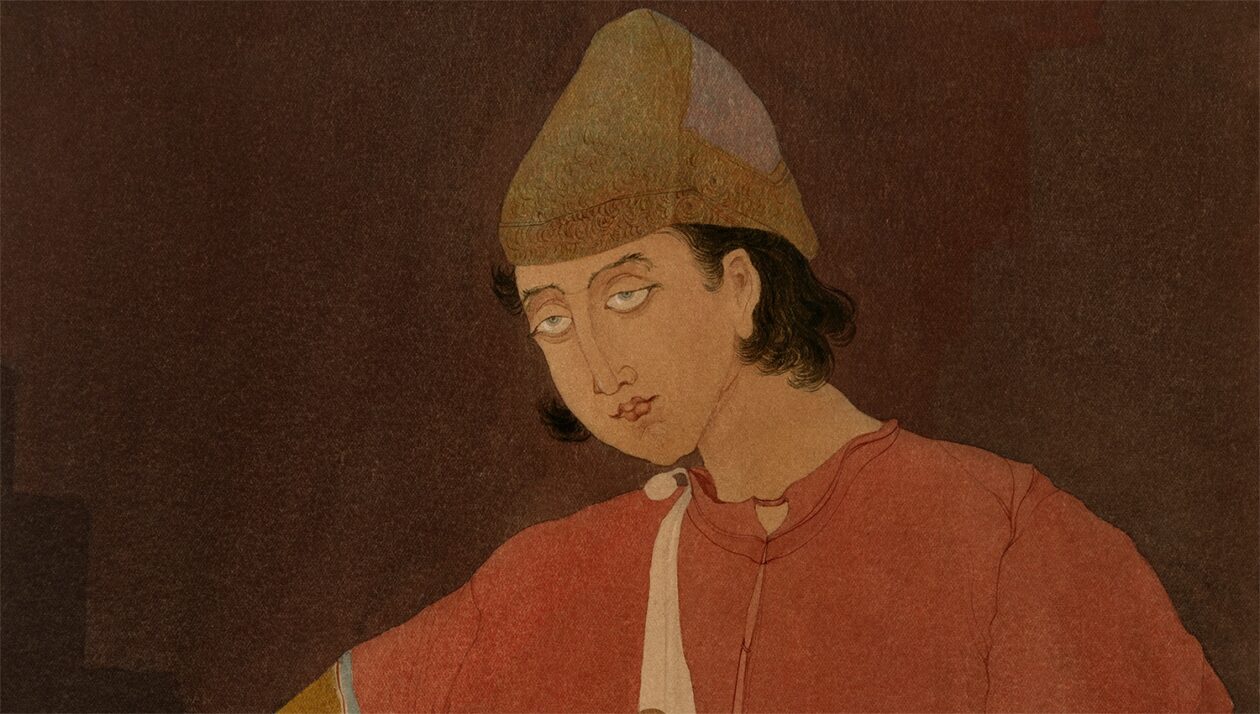

Our experts nincompoop carried away with propaganda all the time.
Some signs disappearing due to reconstruction efforts and not keeping any records.